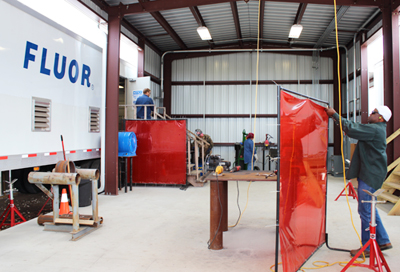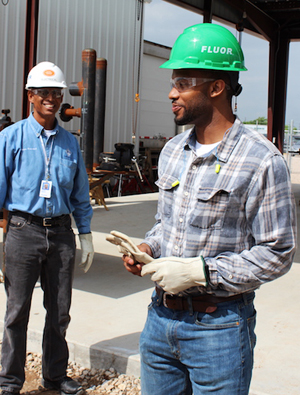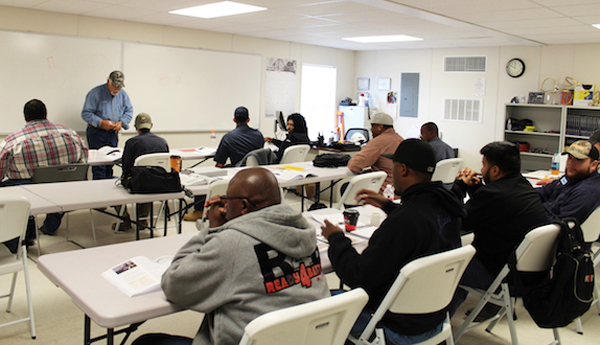 A shortage of skilled labor along the Gulf Coast has one major company going back to its roots when it comes to training a workforce for the future. The Construction Citizen team recently had a chance to tour Fluor’s new craft training facility in Pasadena, where students are being trained at no cost to them.
A shortage of skilled labor along the Gulf Coast has one major company going back to its roots when it comes to training a workforce for the future. The Construction Citizen team recently had a chance to tour Fluor’s new craft training facility in Pasadena, where students are being trained at no cost to them.
As you might imagine, a waiting list has formed of people from all walks of life interested in preparing for a solid career.
While we toured the facility, one student told us his father had heard about the training center in a TV news story. “I was trying to gain some more hands-on experience in my craft," said student Wynton Perro, adding that he jumped at the chance to be a part of what’s happening.

Wynton Perro
"We know there's a skills shortage," said Dean Hamrick, Director of Craft Training for Fluor. Over the next two years, Hamrick and others expect the industry to need roughly 102,000 people with skills in welding, millwright, pipefitting, and more, compared with 91,000 last year. "We're not going to train our way out of it (the shortage), but we're going to try to at least alleviate some of it,” Hamrick said.
“Since the 1960s, Fluor has invested in the future of the craft workforce, providing opportunities to current and future craft professionals,” said David Seaton, Chairman and CEO of Fluor. “We are pleased to aid in developing the next generation of skilled craft workers through our U.S. Gulf Coast craft training center."
The tuition-free training is available in various fields, including electrical, instrumentation, millwright and pipefitting disciplines and advanced training in welding. The training is certified by the National Center for Construction Education and Research (NCCER), giving students portable, industry-recognized certifications and skills.

Millwright class
On any given day, there are about 65 students on site and a waiting list has formed of about 500 people, company officials said.
"We don't promise a job. We promise a skill set," Hamrick said. "An in-demand skill set,” he stressed.
“We saw wage rates for pipe fitters and pipe welders on the Gulf Coast in some cases increase from six to eight percent,” said Jim Hanna, Vice President of Craft Services and Industrial Relations. Despite that, he said there is still a “scarcity of qualified resources."
The training facility’s hands-on experience is about as close to the real world as a person can get without being on an actual jobsite, Hanna said. “One thing that makes it as real as it gets is that to be a student here you have to pass a drug test,” he said. “If you can’t do that, we’re not going to be interested.”
Jared Pitts, a student who was about 5 weeks into the 12-week program, said his goal is to be a mechanical engineer. "I really like the education part of it,” Pitts said. Too often, engineers are known for having “book smarts but not street smarts," he said.
"I really like this opportunity to get the knowledge and come out here and do the work," Pitts said. “It’s the best of both worlds."
Fully acknowledging that working a full-time job while also receiving this training makes for a tough schedule, Pitts said the time and energy is well worth it because of the opportunities that will be available to him in the near future. “One of my classmates said it best: ‘It’s gonna be greater later,’” Pitts said.


